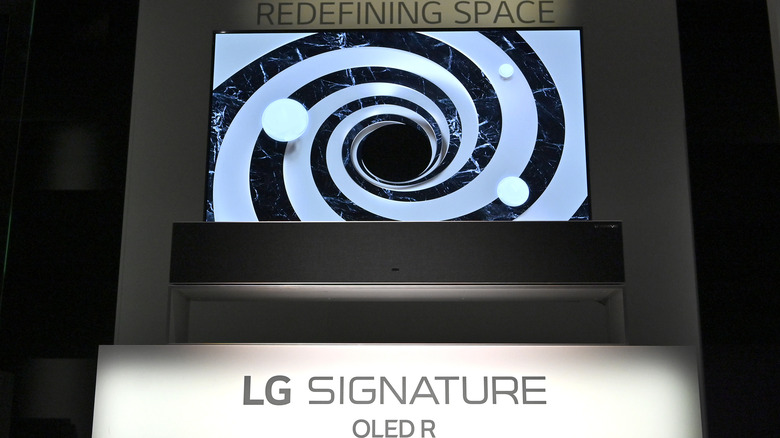Whatever Happened To Rollable TVs (And Why Are They So Expensive)?
For all the excitement about rollable TVs, phones, and other flexible screens, the technology seems oddly absent from the overall electronics marketplace. Flip phones have made a recent resurgence, and while that's in the neighborhood of a flexible screen, those light, fabric-like "rollables" — several of which made it to the prototype stage — never made it to mainstream production. What gives?
At first, investigation seems to yield more questions than answers. The leader in the rollable display field was unquestionably LG, and the company's inability to bring a rollable screen to market likely had more to do with positioning the screen as part of LG's doomed smartphone division.
Indeed, LG hasn't given up on flexible screens. The company showed off a wild stretchable micro-LED display in March 2023, and still sells what the LG website calls "the world's first and only rollable TV."
What technical or business factors limited the much-hyped flexible screen to a single product at just one manufacturer?
The future, for a price
There's a short answer to that: money. LG's rollable TV — a 65-inch 4K OLED beast with three form factors, ranging from full-scale screen to neatly contained smart speaker — sells for a paltry $100,000. The LG Signature OLED R is a niche product, its customer base functionally being limited to the wealthy and corporate buyers looking to project a futuristic image.
Even with the typically pricey, top-of-the-line LG limiting rollable displays to a single absurdly expensive product, it's hardly a surprise that companies like Samsung and TCL decided the innovation wasn't worth the investment. For those companies, foldable screens were a cheaper, more practical way to tap into the same tech-savvy consumer that's most likely to be interested in rollable OLED. As long as people keep buying foldables, there's limited incentive to innovate past that point, unless the tech ever becomes less expensive to manufacture.
That said, there's still LG's stretch-screen device. If the company can make good on its promises of displays so light they can stretch across clothing and furniture, there may yet be a rollable future for tech.

